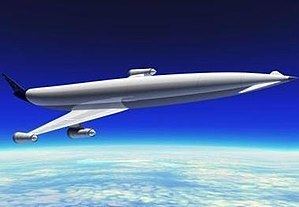Engine type Scimitar Engine | Designer Reaction Engines Limited | |
 | ||
Hypersonic passenger plane lapcat a2 explainer
LAPCAT (Long-Term Advanced Propulsion Concepts and Technologies) was a 36-month European FP6 study to examine ways to produce engines for a Mach 4-8 hypersonic speed aircraft. The project ended in April 2008. It was funded by the European Commission research and development fund (rather than ESA), and cost 7 million euros.
Contents
- Hypersonic passenger plane lapcat a2 explainer
- Ksp lapcat a2 hypersonic aircraft
- Objectives
- Results
- Mach five vehicle
- Mach eight vehicle
- References

LAPCAT II, a 10 million euro, four-year, follow on project, started in October 2008. The study aims to refine some of the results of the first study "allowing the definition of a detailed development roadmap" of a Mach five vehicle.
Ksp lapcat a2 hypersonic aircraft
Objectives
Two major technologies were to be considered:
Key objectives were the definition and evaluation of:
Intended results were:

Results
Among the several vehicles studied, only two novel concepts were retained for LAPCAT II: a Mach five vehicle and a Mach eight vehicle.
Mach five vehicle
One possible supersonic transport aircraft being researched as part of this project is the A2 by Reaction Engines Limited. The researchers are looking at an aircraft capable of flying from Brussels (Belgium) to Sydney (Australia) in 2–4 hours, significantly reducing journey times across the globe.
To attain and maintain such high speeds, Reaction Engines Limited would need to develop its newly designed concept engine called the Scimitar, which exploits the thermodynamic properties of liquid hydrogen. The engine is theoretically capable of powering the A2 to a sustained Mach 5 throughout flight with an effective exhaust velocity of 40,900 m/s or specific impulse of 4170 s, SFC 0.86 lb/(lbf·h).
"Results so far show the Mach 5 vehicle from Reaction Engines can avoid later technology pitfalls and could travel from Brussels to Sydney," says ESA's LAPCAT project coordinator Johan Steelant.
Mach eight vehicle
Although the cruise flight of the scramjet based Mach eight vehicle seems feasible, the fuel consumption during acceleration requires a large fuel fraction, severely affecting gross take-off weight. Initial studies of a first-stage rocket ejector concept gave poor range with large take-off mass.
